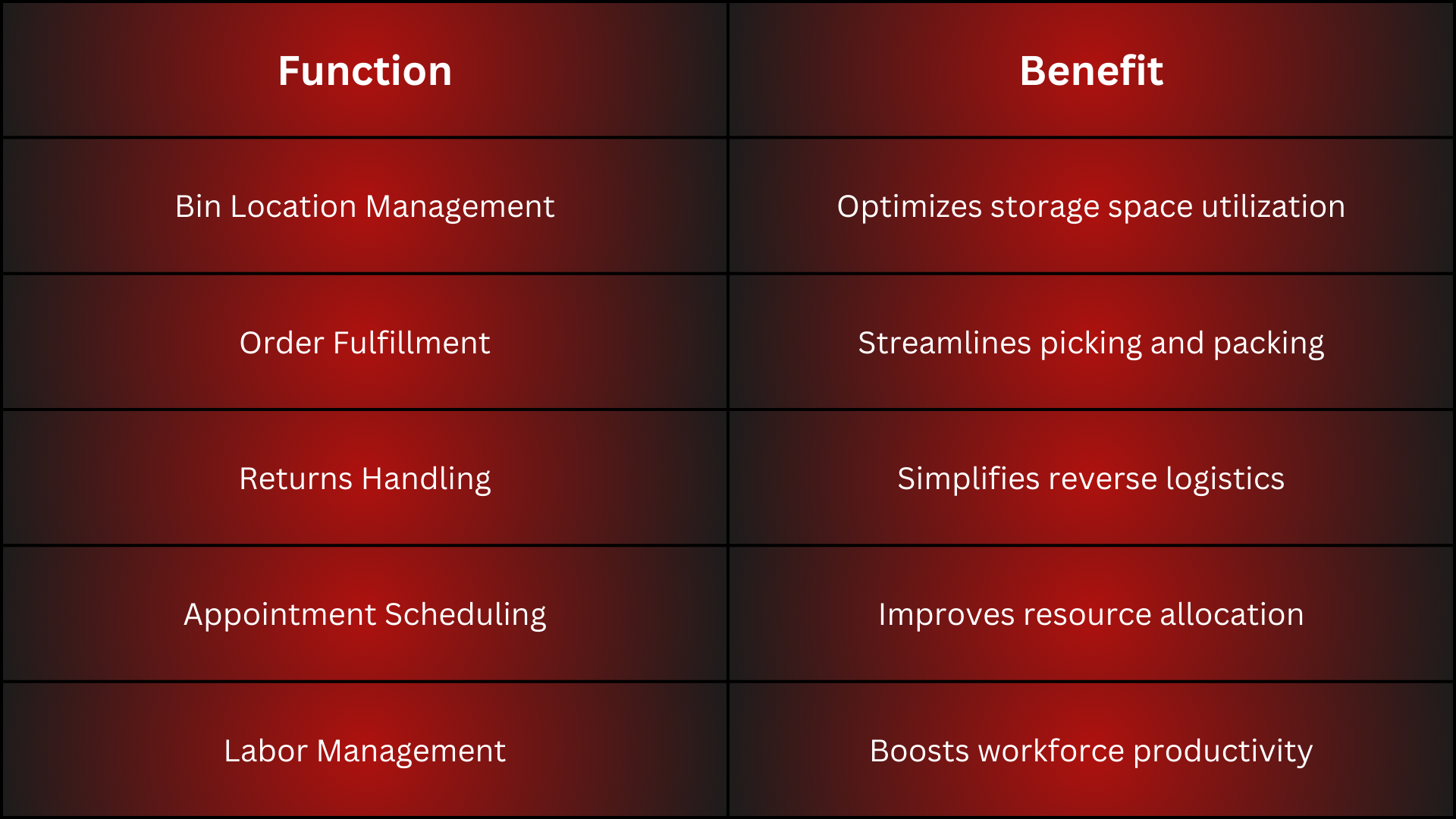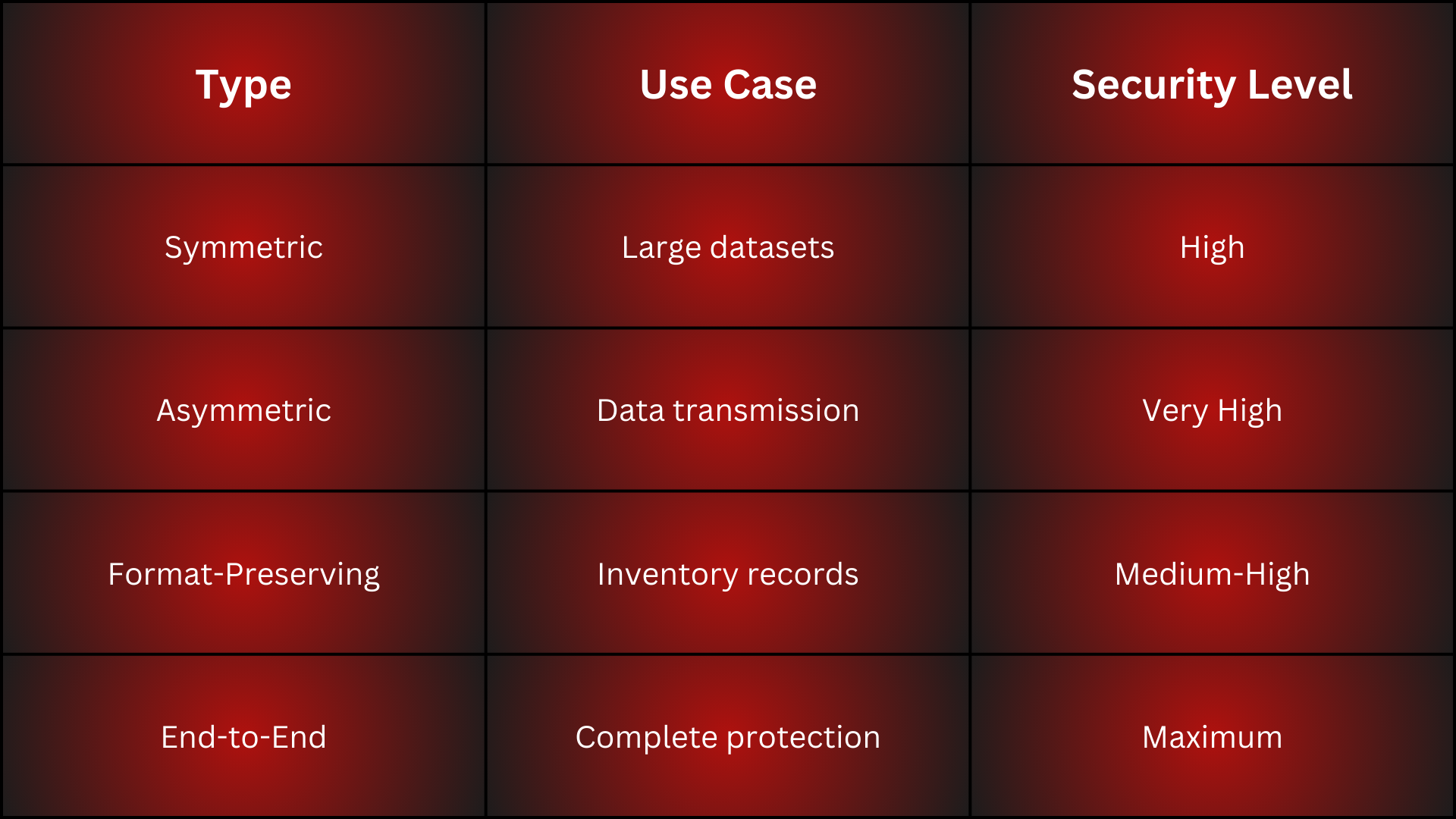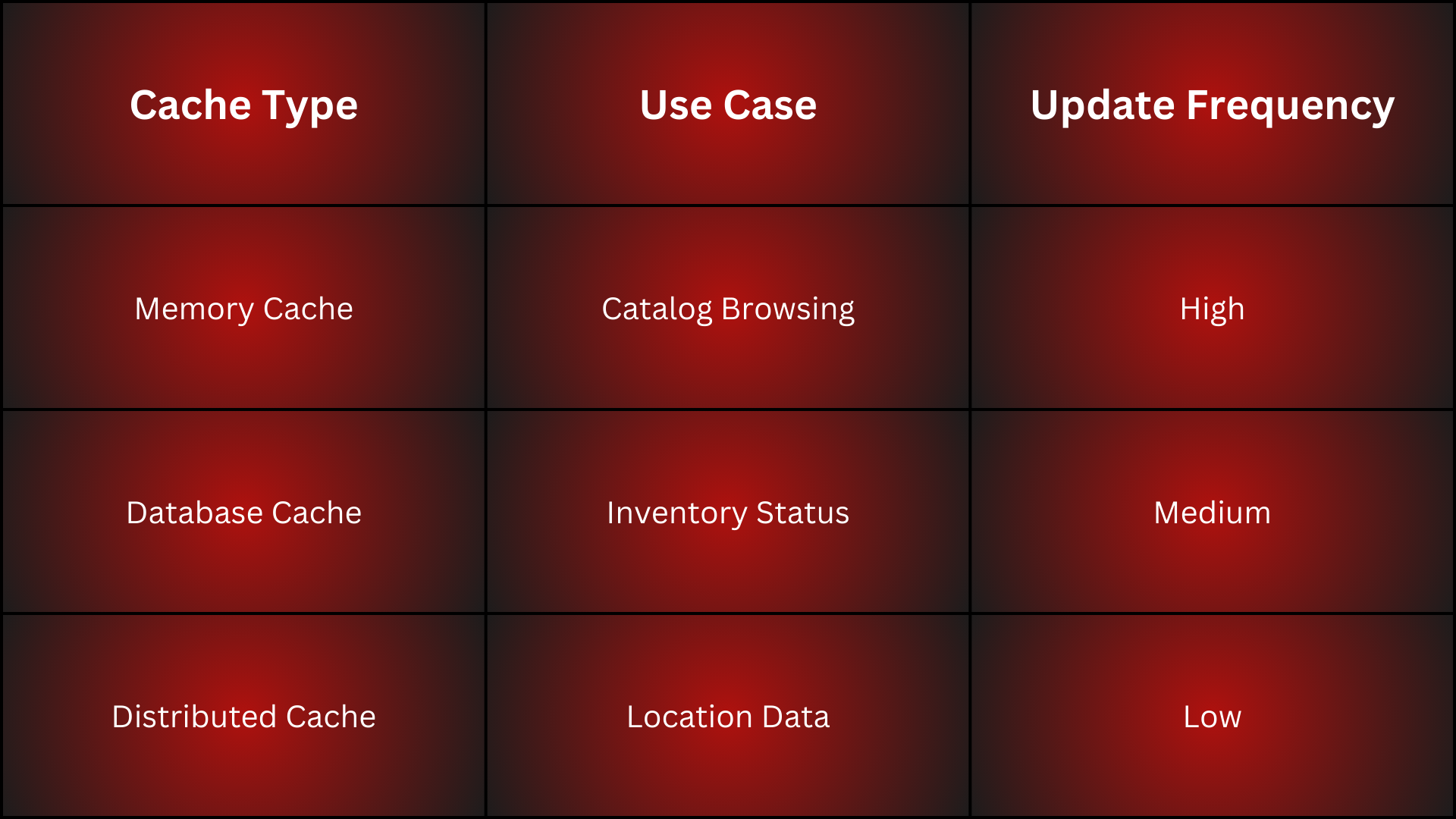
Did you know that businesses lose $1.1 trillion annually due to inventory mismanagement? 43% of small businesses struggle with inventory control. They either don't track their inventory or rely on manual methods. Large enterprises face similar challenges with outdated systems that can't match today's supply chain needs.
The answer lies in creating resilient inventory management software that utilizes modern architecture, AI capabilities, and advanced security protocols. Success depends on careful planning, a solid technical foundation, and deep knowledge of business needs and technology possibilities.
This detailed guide explains everything you need to develop inventory management software. You'll learn about choosing the right architecture, adding AI-powered forecasting, and ensuring peak performance. The guide serves as your roadmap to success, whether you're building from scratch or upgrading existing systems.
Modern Architecture Fundamentals
Building modern inventory management software needs solid architectural basics that will help the system grow and stay maintainable. Let's look at the key architectural choices that are the foundations of strong inventory systems.
Microservices vs Monolithic Architecture
The decision between microservices and monolithic architecture affects the system's flexibility and growth by a lot. Recent studies show that 90% of all applications switched to microservices architectures by 2022. This switch helped them boost their code design, debugging, and update process.
Monolithic architecture makes the inventory management system work as one unified unit where all parts connect tightly. This setup makes testing simple, debugging easier and speeds up the original development.
Microservices architecture has become the top choice for modern inventory systems. Breaking down the application into standalone services that deploy independently lets organizations:
- Scale components independently
- Deploy faster
- Keep faults isolated
- Choose different tech stacks
- Give teams more freedom
Cloud-Native Development Approach
Cloud-native development has changed inventory management software completely. Studies show that enterprises adopting cloud-native inventory management solutions get more flexibility, immediate visibility, and better analytics.
Cloud-native methods let you deliver and integrate updates often without putting extra load on your IT team. CISIN knows how to set up cloud-native solutions that make use of these benefits for the best system performance.
Scalability Considerations
Scalability has become crucial to system design, especially after recent market changes showed why handling sudden workload spikes matters. A good inventory management system should scale both up and out.
Scaling out means adding more machines to spread the workload. This method costs less than scaling up in most cases and uses resources better while boosting performance.
Modern inventory systems must include these key scaling features:
- Load Balancing: Spreads incoming requests across servers to avoid slowdowns
- Data Replication: Keeps data reliable by copying it across servers
- Sharding: Helps scale out by spreading inventory data across multiple database servers
The system needs to stay available while keeping inventory tracking consistent worldwide. Studies show that companies can lose millions from just a few minutes of downtime.
Building modern inventory management software needs these architectural basics to create systems that handle growing business needs while running at their best.
Building the Technology Foundation
Building a strong inventory management system needs the right mix of technologies and development practices. Success starts with picking the right tools and setting up simplified processes.
Selecting Development Framework
Your inventory management software's success depends on picking the right frameworks. Real-world data shows that winning implementations combine backend and frontend technologies effectively. Here are the popular framework choices:
- Backend Options:
- Python with Django or Flask
- Node.js with Express.js
- Java with Spring Framework
- Frontend Frameworks:
- React.js
- Angular
- Vue.js
CISIN's years of custom software development experience suggests picking frameworks based on how much you need to scale and your team's skills.
Read Also: Angular or React for Progressive Web Apps: Which Offers the Most Impact at the Lowest Cost?
Setting Up Development Environment
A well-set-up development environment will give a smooth coding and testing experience. Development teams often pick integrated development environments (IDEs) like PyCharm, Visual Studio Code, or IntelliJ IDEA. Your environment should have:
Essential Components:
- Database management tools
- API testing interfaces
- Code analysis utilities
- Debugging tools
Cloud setup is vital, and providers like AWS, Azure, or Google Cloud Platform give you detailed development environments.
Version Control and CI/CD Pipeline
Version control and CI/CD pipelines are the foundations of modern software development. Research shows that 87% of teams using Git-based development face fewer integration issues and get better code quality.
Here's how to implement CI/CD:
- Repository Setup: Set up Git repositories with proper branching strategies
- Automation Configuration: Create automated build triggers for code commits
- Testing Integration: Add automated testing frameworks
- Deployment Automation: Set up automatic deployment pipelines
- Monitoring Setup: Create performance monitoring systems
CI/CD pipelines boost development speed by automating builds, tests, and deployments. Teams can reduce manual errors and maintain consistent quality through automation.
Teams should add detailed security testing in their CI/CD pipeline. This includes both static (SAST) and dynamic (DAST) security testing protocols. Security stays a priority throughout development this way.
Your technology foundation should match current needs and future growth plans. Organizations can build strong inventory management systems that handle modern business needs and stay reliable by getting these basics right.
Implementing AI/ML Capabilities
AI and ML know how to make inventory management software better than ever before. These smart technologies help businesses make evidence-based choices with amazing accuracy.
Demand Forecasting Algorithms
Today's inventory systems use AI-driven forecasting algorithms that look at huge datasets to predict what's needed next. These systems show remarkable accuracy because they look at many factors at once. CISIN builds smart forecasting models that look at:
- Historical sales patterns
- Seasonal fluctuations
- Market trends
- External economic indicators
- Weather conditions
- Social media sentiment
Research shows that AI-powered demand forecasting cuts down supply chain errors by a lot, which leads to better accuracy and fewer losses.
Automated Reordering System
Automated reordering systems mark a huge step forward in inventory management software. These systems watch stock levels constantly and create purchase orders automatically when inventory hits certain levels.
The automated reordering works through these key steps:
- Real-time inventory monitoring
- Dynamic threshold management
- Supplier lead time optimization
- Purchase order generation
- Order tracking and confirmation
Studies prove that automated reordering systems can eliminate all but one of these manual errors in ordering. These systems make use of information from sensors, scanners and tracking tech to keep stock at perfect levels.
Predictive Analytics Integration
Predictive analytics serves as the life-blood of modern inventory software that turns raw data into practical insights. Companies can figure out future inventory needs with amazing precision by analyzing past data, statistical algorithms and machine learning methods.
Adding predictive analytics has brought big wins, with companies seeing up to 3.5 times boost in turnover. This tech helps businesses optimize their stock by calculating perfect quantities based on expected demand, delivery times and other key factors.
Advanced Capabilities: Predictive analytics spots patterns in inventory data that humans might miss while processing multiple data streams in real-time. The system gets better over time as it learns from more data.
CISIN's expertise in AI helps businesses employ these advanced features to build inventory systems that not only handle current needs but also predict future demands accurately.
Developing Core Modules
Core modules are the backbone of successful inventory management software. These vital components work together to create a detailed system that gives efficient inventory control and smooth operations.
Inventory Tracking System
Modern inventory tracking systems are the foundations of good inventory management software. These systems show stock levels and movement in real-time. Studies prove that proper inventory tracking can increase profits and optimize operations.
A resilient inventory tracking system includes:
- Up-to-the-minute inventory monitoring across locations
- Automated stock level synchronization
- Dynamic threshold management
- Detailed data analysis capabilities
- Automated reordering triggers
CISIN's inventory management solutions use advanced tracking features. Businesses can maintain optimal stock levels and reduce carrying costs by 30%.
Warehouse Management Module
The warehouse management module coordinates daily warehouse operations from receiving to shipping. Research shows that good warehouse management improves order accuracy and reduces processing time.
Key Warehouse Management Features:

Good warehouse management aids inventory visibility and prevents losses from damage or theft. Barcode scanning and RFID technology integration improves accuracy.
Supply Chain Integration
Supply chain integration features allow smooth communication across the entire supply network. Research shows that integrated supply chain management helps businesses communicate better and manage risks. Companies that use integrated supply chain solutions see major improvements in logistics.
The development focuses on creating responsive and agile systems. Key integration aspects include:
External Integration: Quick response to customer demand changes reduces lead times.
Internal Integration: Better cross-functional communication breaks down departmental barriers.
Functional Integration: Information and resource sharing optimizes operations across areas.
Through CISIN's expertise in logistics software development, businesses can implement detailed integration solutions. These connect suppliers, manufacturers, distributors, and end-users in one ecosystem. This integration helps maintain competitive advantage in today's ever-changing market.
The system provides instant updates and automated notifications. All stakeholders can access current information quickly. Companies using integrated supply chain management make faster decisions and run operations smoothly.
Security Implementation
Security is the life-blood of inventory management software development. Studies show that knowing and controlling inventory plays a vital role in building strong security architecture.
Access Control Systems
Modern inventory management systems need strong access control mechanisms to protect sensitive data. Research shows that proper access controls can substantially reduce unauthorized access attempts and improve the overall security posture.
Key security features include:
- Multi-factor authentication implementation
- Role-based access control (RBAC)
- Automated access logging and monitoring
- Emergency access protocols
- Mobile credential support
CISIN implements advanced access control systems that achieve 99.9% unlock reliability through patented Triple Unlock technology. This ensures both security and accessibility.
Data Encryption Methods
Data encryption is a fundamental security measure that converts readable data into encoded formats to protect against unauthorized access. Studies show that encryption becomes especially important when inventory systems handle sensitive information through multiple channels.
Encryption Implementation Matrix:

Organizations that implement complete encryption strategies report significant improvements in data security. Encrypted backups provide additional protection against data loss.
Read More: Is Your Business Data Secure? Discover the Impact of Encryption on Your Bottom Line
Security Testing Protocols
Security testing protocols create the final defense layer in inventory management software development. Research shows that regular security audits and testing help identify and address vulnerabilities effectively.
Testing Implementation Strategy:
- Automated vulnerability scanning
- Penetration testing of access points
- Security compliance verification
- Performance impact assessment
- Recovery procedure validation
Studies reveal that organizations that conduct regular security audits face fewer security breaches and maintain better inventory control. CISIN implements complete security testing protocols that match industry standards while ensuring optimal system performance.
These security measures need careful evaluation of current and future threats. Research indicates that 90% of industrial control systems remain vulnerable to cybersecurity incidents. This makes strong security measures throughout the inventory management software development process essential.
Organizations that implement strong authentication and access controls, along with proper data encryption and regular security testing, see substantial improvements in their security posture. These security implementations work with the system's core modules to ensure complete protection while maintaining operational efficiency.
Performance Optimization
Performance optimization is a vital factor when you build strong inventory management software that handles large operations quickly. Studies show that automated database optimization techniques can make both application and database servers work better.
Database Query Optimization
High-performing inventory management systems need well-optimized queries as their foundation. Research proves that optimized queries lead to reduced load times, use fewer resources, and make databases perform better.
CISIN uses detailed query optimization strategies that include:
- Query profiling and monitoring
- Automated wait time analysis
- Machine learning-based troubleshooting
- Index optimization
- Data partitioning and sharding
Studies reveal that good database optimization cuts CPU execution time and boosts overall throughput. Companies that use these strategies see big improvements in query response times and resource usage.
Caching Implementation
Caching makes inventory management software perform better. Most inventory repositories disable caching by default to keep data accurate across server instances. But smart caching mechanisms can boost system performance by a lot.
Caching Configuration Matrix:

CachingInventoryManager gives you a quick way to display inventory information, especially during catalog browsing when live updates aren't critical. You should think about:
- Cache Expiry Configuration: Different expiry times based on threshold quantities
- Priority Settings: Determines which records to purge during cache overflow
- Distribution Modes: Supports clustered environments with WebSphere Cache Monitor
Load Balancing Setup
Load balancing spreads network traffic across multiple resources evenly and gives you high availability and scalability. Research proves that good load balancing makes systems perform better and more reliably.
The load balancing system uses smart distribution algorithms, including:
Distribution Methods:
- Least Connection Method
- Round Robin Distribution
- Least Response Time Approach
- Resource-Based Allocation
Studies show that session persistence specifications help maintain a smooth user experience. The load balancer uses a 5-tuple hash algorithm (source IP, source port, destination IP, destination port, and protocol type) to map traffic well.
CISIN's performance monitoring tools show live system behavior and let organizations:
- Monitor query performance continuously
- Find and fix bottlenecks quickly
- Optimize resource allocation
- Keep systems healthy
These optimization strategies need careful planning based on traffic patterns, data access frequency, and system resources. Companies that use detailed optimization approaches see major improvements in system performance, and some achieve up to 1000x faster inventory cache reads.
Performance optimization works best as an ongoing process. You should watch and adjust it based on system metrics and user needs. This way, your inventory management software stays fast even as your business grows and data expands.
Conclusion
Building effective inventory management software needs multiple vital elements - from modern architecture selection to performance optimization. Companies that work with experienced developers like CISIN can build resilient systems that meet today's needs and prepare for future expansion.
Security measures, AI-powered features, and optimized performance are the foundations of successful inventory management solutions. Research proves that businesses using these advanced features see remarkable improvements. Some achieve up to 1000x faster operations when they optimize properly.
The right technology choices, strong security protocols, and constant performance monitoring determine how well inventory management software works. Organizations should build systems that track inventory well and provide applicable information through AI and machine learning.
CISIN's expertise helps businesses develop detailed inventory management solutions that handle these key aspects while ensuring sustainability and growth. Companies succeed in today's competitive market when they take this all-encompassing approach.




